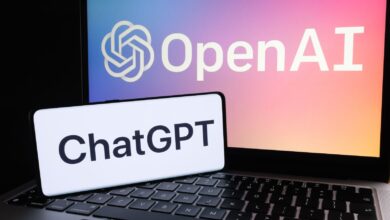Generative Artificial Intelligence for Legal Departments | Ward and Smith, P.A.

In a recent presentation by Ward and Smith attorney Angela Doughty, in-house counsel received an overview of Artificial Intelligence (AI), how it can be used for various legal tasks such as research, discovery, and contract development, and pitfalls to avoid when implementing the technology.
Doughty is a Certified Information Privacy Professional (CIPP-US) and leads the firm’s Privacy and Data Security and AI groups. She also serves as the Director of Legal Innovation for Ward and Smith, routinely advising the firm and clients on data privacy and security, intellectual property, AI, and technology applications related to the legal field.
In terms of leveraging data to identify patterns, predict behavior, and display advertisements that are personalized to the user, AI has been around for decades. The new AI that has garnered media attention, thanks to platforms like ChatGPT and Bard, is Generative AI (GAI), which simulates human reasoning by using large language models and a text-based model to respond to prompts.
“Generative AI is able to create text, code, images, music…but there has been a lot of discussion about whether this content is new or original,” Doughty said, “as it is essentially developing this content based on the creativity of somebody else.”
Pitfalls of Generative AI for In-House Counsel
Although able to quickly synthesize massive amounts of data and produce a response that appears to be knowledgeable, GAI lacks the “mental” capacity to recognize when information is either unreliable or there is not enough available.
Aside from “hallucinating” occasionally, AI does not fact-check or Shepardize. Further, unless specifically designed for a particular use, it does not have industry context or nuance. “It’s still better to ask a colleague for advice at this point,” noted Doughty.
Data privacy and security are other concerning issues. The terms of service in ChatGPT and Bard spell out that the systems are allowed to keep any information they receive for training purposes. The stated intent is to improve the technology and that is an easy sell for many who believe in the benefits.
Some do not have as much trust in the systems, however. Elon Musk, a critic and proponent of the technology, recently said in an interview with Andrew Ross Sorkin on CNBC that OpenAI is lying about not using copyrighted information.
Similarly, a discussion of AI may be incomplete without mentioning the recent Hollywood writers’ strike and its goal of prohibiting the use of AI for screenwriting, or to undermine the IP rights of a writer.
Automating the Mundane for Legal Departments
AI, and especially GAI, can be an effective tool in the legal field. Research using AI or GAI does not require the use of keywords, cite keys, or boolean operators; instead, it is possible to simply ask the technology a question, similar to speaking with a colleague.
Worries over citing the wrong statute or sifting through tomes of irrelevant information may be a thing of the past. Eliminating the latter is a cause of concern for many veteran attorneys, the idea being that researching and analyzing is essential for attorneys to develop a broad knowledge base.
Drafting contracts, analyzing contracts, due diligence and e-discovery are other areas that GAI has the potential to streamline for attorneys. “You can give it a word or timeframe, and it will summarize all the documents related to those parameters, along with links to relevant items in the document,” noted Doughty.
Risk assessment for litigators receives a similar benefit. “The GAI will outline your risks for certain decisions, based on your strategy and its ability to synthesize vast amounts of data,” advised Doughty. “It will then provide a recommendation for implementing your strategy.”
GAI could potentially save countless hours, but there are many items for attorneys to be aware of in regard to the technology. Attorneys must have a basic understanding of the technology to ensure quality legal services and comply with professional ethical obligations.
The use of GAI does not preclude accountability, as attorneys will remain responsible for the work that is delivered. This summer, an attorney in New York delivered legal work formed by Generative AI where the cited cases were hallucinated, causing tremendous embarrassment.
Safeguarding proprietary company information is another key area of concern. “When dealing with vendors, it’s important to review their terms and conditions. Knowing whether they are using your data to train their systems or if they are putting it into some sort of AI black box for future use or selling is essential,” Doughty explained.
“My advice is to not allow the vendor to do anything with the information you feed into their system, except keep it in the confines of your company system. Some vendors may refuse, and it will boil down to how badly you want to work with them,” added Doughty.
Communicating the extent to which GAI will be used in the representation process, how it will affect billing, and ensuring it does not result in biases/unfair practices are other important factors.
A Revolutionary Tool for Legal Departments
The hype surrounding GAI may not be overblown. To illustrate the effectiveness of the technology, Doughty shared a number of real-world examples, including how she used it to create a summary of Fahrenheit 451, with the top five points and character information, in order to be able to discuss the book with her daughter for school projects.
Having a blog written by AI can be achieved by providing it with a topic, a target audience, and a few links. Although the speed and accuracy of AI-created blogs are amazing, it may be worthwhile to review whether the copy was plagiarized from said links, as Musk’s claim may not be complete paranoia.
Similarly, it’s important to understand that any content developed by AI is likely to contain embedded code or links. Aside from the ethics involved, this makes it inadvisable to claim the content is an original creation.
Also, the quality of the work is often bland and substandard. Doughty advised that working with GAI should not be a copy-and-paste type of situation and everything should be reviewed thoroughly both for facts, accuracy, and for tone.
Doughty recently used GAI to help her fix a broken toilet. For background, Doughty explained that her husband is a contractor and mentioned her lack of experience troubleshooting household issues. “The guidance provided by the AI far surpassed the instructions on the back of the tool, and I was able to solve this problem in a shorter timeframe than I thought possible,” she said. “Score one for Generative AI!”
Problem-solving is another area where AI technology excels. In the past, figuring out how to generate additional website traffic might have required a few hours spent reading how-to articles. Now, the AI is able to provide actionable recommendations in seconds.
Summarizing lengthy white papers, writing emails and translating documents are other examples of the technology’s potential.
AI Best Practices for In-House Counsel
Considering that technology can quickly develop memos, presentations, or evaluations, the potential for time-saving is significant. “Obviously, it’s not perfect, but it’s generally going to get you 60 to 70 percent there. It’s easier to edit and rewrite than starting from scratch,” commented Doughty.
Leveraging the technology is different from inputting keywords into a Google search. Instead, users should imagine they are working with an assistant or paralegal. To save time and attain the maximum possible benefit from the technology, it is advisable to:
- Ask clear, specific questions with details and context
- Offer background/target audience information and space constraints
- Use prompts that encourage detailed responses, opinions, and explanations
- Experiment with different prompts and tones
“The tech is especially useful when responding quickly is a necessity. We’ve all gotten those late-night requests where we need to respond and know the answer, but our brains are tired from working all day. Recently, I asked the AI to summarize the damages available under the Lanham Act in bullet points with a business executive as a target audience, and it was a very helpful starting point,” added Doughty. The key, however, is to be sufficiently familiar with the topic to be able to fact-check the AI’s responses.
Questions from In-House Counsel
The large number of questions indicated there is a substantial amount of interest in the technology. One audience member wondered whether copyright law is an issue.
Copyright concerns:
In response, Doughty referenced a similar case involving a monkey that took a picture. Those in favor of the monkey being able to own a copyright argued the animal did not use the creativity of another entity to create the work. The courts ultimately decided, however, that a monkey cannot own a copyright.
“I would only ask the AI to update material I already owned,” Doughty said. “You have to be careful with this from a copyright perspective because there are significant penalties. Our advice to clients is to only put in content you actually own if you plan to use whatever the AI makes for a business or commercial purpose.”
Adoption of AI by Legal Departments:
Another audience member asked about the level of implementation Doughty has witnessed across different business segments. Most legal departments have been reluctant to implement the technology based on concerns over accuracy.
Sales and marketing teams have been early adopters, using AI to develop marketing collateral. “It’s hard to see where marketing content came from, so it’s kind of like the Wild West, but my thinking is that a conservative approach is best, i.e., do not use it unless the technology has been licensed by the company and you have been trained on it,” Doughty explained.
Advice on Adoption:
Doughty was asked what advice she had for people who may need to encourage their managers or leaders to adopt the technology.
Doughty explained it is important to outline how the technology is going to benefit the organization and augment existing processes. “It may also be important to let them know the potential costs of ignoring the technology, not conducting trainings or implementing it appropriately,” noted Doughty.
The interaction between AI and social/moral issues formed the crux of a final question. “Especially with social media, the divisiveness and sheer amount of opinions can result in biases, as the technology is usually pulling information from everything available. This is why it’s so important to draw a line around the data set that can be used and be very particular about your training,” concluded Doughty.



